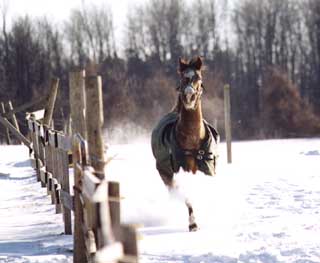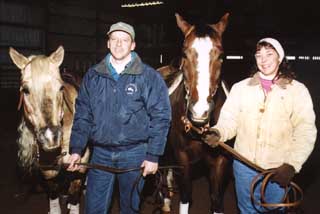
familiar sights Horses are a big business in New York state. Monroe County ranks sixth in the state for the number of horses owned, namely for pleasure purposes. The New York State Department of Agriculture conducted a survey of horse owners in September 2000 and concluded that there were approximately 30,000 horse farms in the state, housing more than 168,000 horses, with a value of over $1.7 billion. It was the first comprehensive survey of horses done in twelve years. In Monroe County, there are about 5,700 horses valued at over $28 million; Orleans County has approximately 1,400 horses, and Genesee County has approximately 2,100. The average expense for keeping and boarding a horse is about $4,200 per year, a figure which includes operating and capital expenses -- board, feed, bedding, blacksmith and veterinary expenses, and equipment. With the average life span of a horse being between 20 and 30 years, costs of keeping such a pet escalate over time. The survey sent to horse owners asked for one primary use of the animal. Most respondents said for pleasure (39 percent), while 18 percent throughout New York have horses for breeding purposes, and 17 percent are used for showing and competition purposes. There are more horse farms in the readership area than in the past, but with a fewer number of horses per farm. Town regulations for owning a horse vary slightly; most require having at least five acres of land. The accompanying table shows the land and lot requirements for the surrounding towns. The Town of Bergen requires the owner of any farm animal to have a waste manure management plan. This plan is made with the Soil & Water Conservation District in Batavia. The goal is to keep the property clean without a piling up of manure. The Town of Parma requires that owners who board horses other than their own on their property have a special permit. In addition, there is a maximum of 6,000 square feet for any structure on the property. The property must be fenced with a minimum four-foot fence of sufficient strength to keep the animal contained. Barns, stalls, paddocks and other grounds where horses are kept must be maintained in clean and sanitary conditions with no odor. The Town of Clarendon currently requires a minimum of five acres for a barn structure. The structure must be 100 feet from the side and at the rear of the lot line. However, a new zoning ordinance will soon be in effect with new requirements for acreage per horse. The exact requirements are not presently known. Part 2 next week: Special animals become treasured companions. |

